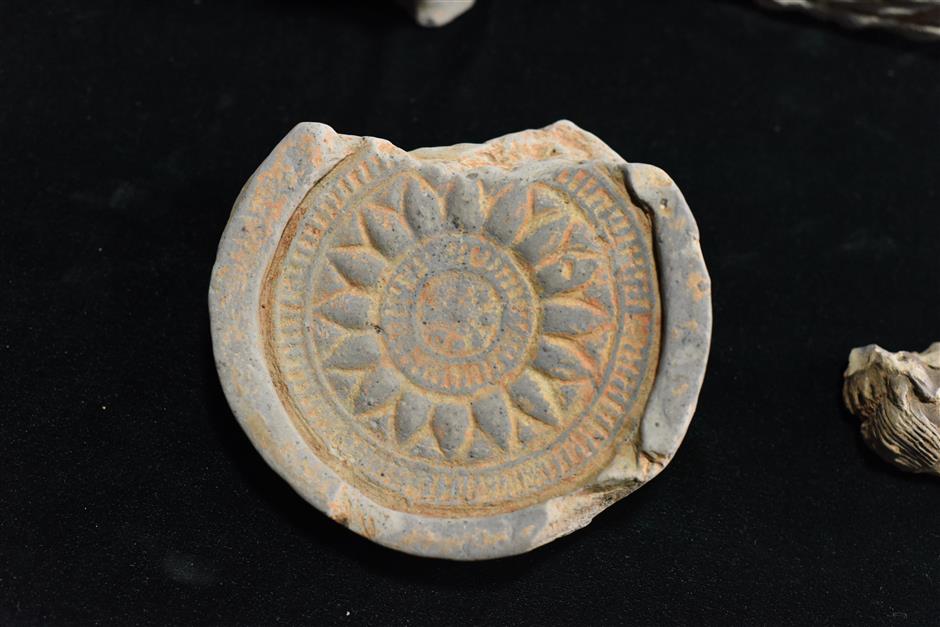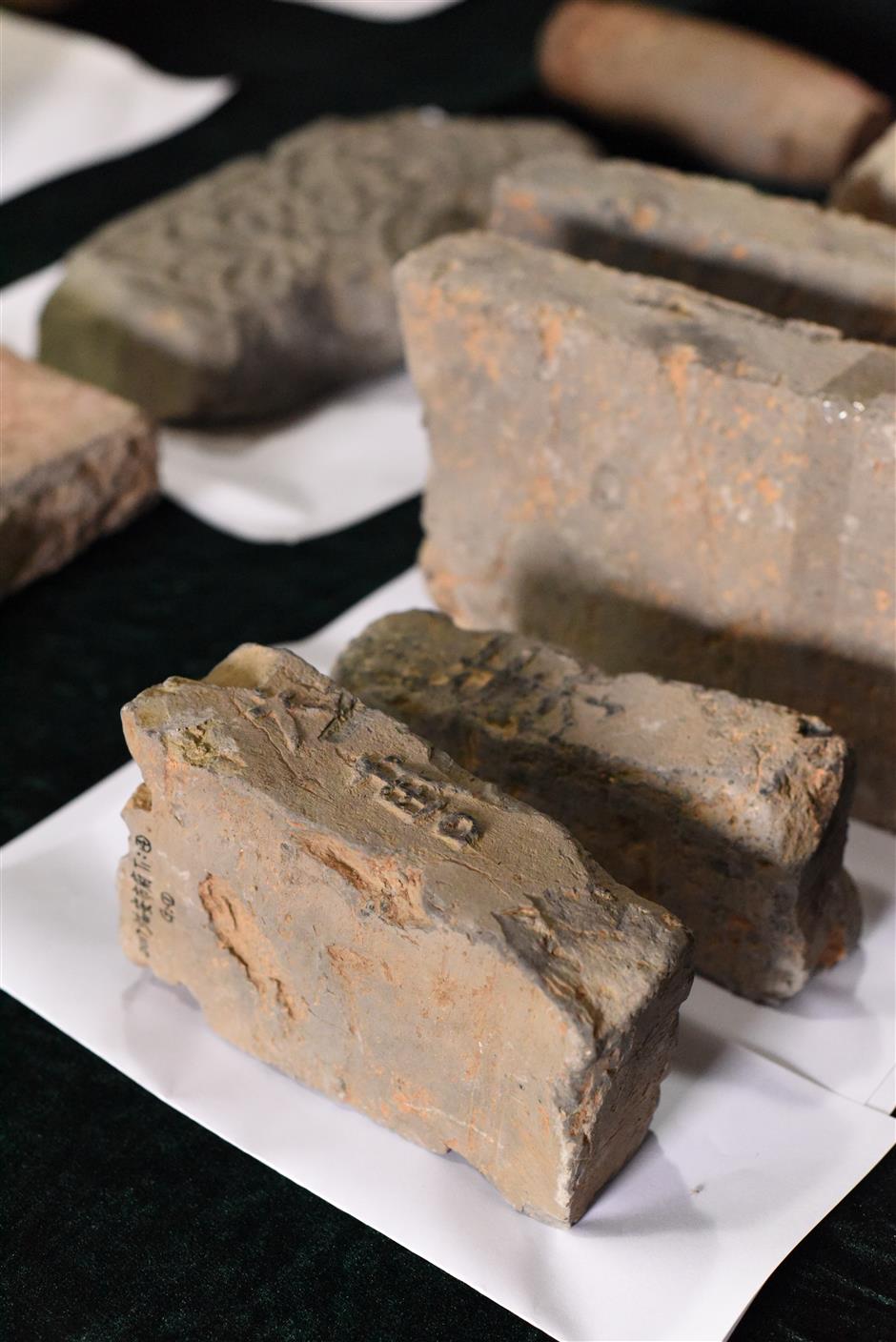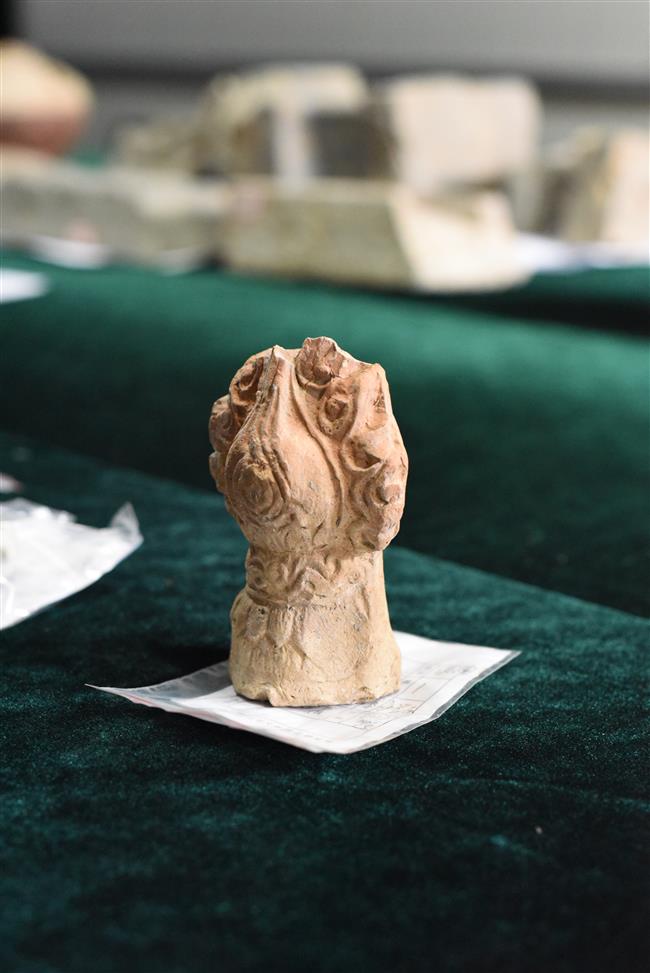Unearthing historical secrets to understand ancestral past
The Hangzhou Institute of Archeology has unearthed three significant discoveries in the city this year.
By the end of November, the institute had already excavated 47 archaeological projects, covering a dig area of 11,650 square meters. In 88 ancient tombs, 3,050 pieces of antiques were discovered.
The first discovery came from Lin'an District government in April, when it was constructing a parking lot alongside an office building. During the construction work, an ancient architectural foundation was discovered, with centuries-old bricks, porcelains and coins.
After months of research, the find was identified as a relic belonging to the Wuyue Kingdom, during the Five Dynasties and Ten Kingdoms Period (AD 907-979).

One of the findings found in Nangao Peak
Archaeologists considered it to be an important venue in the country, since it is located near the graveyard of Qian Liu, emperor of Wuyue Kingdom, and the thoroughfare of the original Lin’an city.
The scale of all unearthed antiques testifies to the find. The bricks were engraved with the character “官” which literally means they were officially used to build royal departments in ancient times.
However, the property of this building is still in dispute. Some archaeologists believe it belonged to the imperial court, while the others consider it to be a military department, which is supported by some historical archives.
“We cannot draw a conclusion right now due to the limit of the digging area,” said Wang Zhengyu, the project director. “It requires more research and excavation in the future.”
The second significant discovery was in Nangao Peak. In Hangzhou, the popular scenic attraction, “Two Peaks Piercing Clouds”(双峰插云) consists of Beigao and Nangao peaks.
For years, Beigao has stolen thunder from Nangao by virtue of its quality infrastructures, thriving tourism development, and a scenic trail that always allures hikers craving for lush grass, trees, twittering birds and the trickle of creeks.

One of the findings found in Nangao Peak
This year, Hangzhou government plans to upgrade Nangao Peak, which was home to ancient pavilions, pagodas and grottoes for centuries. The Hangzhou Institute of Archeology was invited to explore this area in order to preserve antiques before construction.
The tallest pagoda on the peak is Nangao Pagoda, which could date back to the Five Dynasties and Ten Kingdoms Period. However, it was ruined during the dynasties and the only remains are its foundations at present.
The institute dug 1,350 square meters around the foundations and discovered remnants of pavilions, roads, drainage ditches and walls. Most of them were erected in the Song Dynasty (960-1279).
According to historical documents, the pagoda was not only used for sightseeing, but also as a fengshui treasure for the city. In addition, locals burned incense and worshipped it to pray for happiness and safety since they believed the pagoda protected them.

One of the findings found in Nangao Peak
The unearthed bricks are carved with people’s names and cities, because donating bricks to building religious venues was considered to bring good luck to offspring during that period.
“The excavation of Nangao Peak provides plenty of materials to research the religious architecture in the Song Dynasty and restore the pagoda in the future,” said Yang Xi, the project director. “It also offers an opportunity to upgrade the protection of historical heritage around West Lake.”
The last discovery was in the downtown area. The institute spent nearly 10 months unearthing the Quan Ye Li, an old residential community hidden in the Hubin commercial belt alongside West Lake.
The highlights of this excavation were two wooden water tubes. In the Southern Song Dynasty (1127-1279), when Hangzhou was made the capital, the densely populated city required a large amount of clean water every day. Thus, wells and tubes were used to divert water from West Lake to residential communities.

The bricks were used to build royal department in ancient times.
Natives started to draw water from the lake in the Tang Dynasty (AD 618-907) but the pipe properties had varied throughout the dynasties, from bamboo to tile, and from wood to stone. People kept changing the materials to prolong the lifespan of the tubes.
“Smart ancestors used mortise-and-tenon techniques to joint pieces of wood together and made an opening to clear silt periodically,” said Li Kun, the project director. “However, the wooden tubes are easily chocked with silt because of the narrow diameter. That is why people turned to stone tubes.”
Except for the wooden tubes, the institute also found two tombs dating back to the Three Kingdoms (AD 220-280) and Tang Dynasty. It is the first time Hangzhou discovered graves in this period in the downtown area.
“Tombs often appeared outside city, which means its present-day location was the suburb of ancient Hangzhou. That helps define the boundary of the city in that period, since rare archives were left about its territory during the Sui (AD 581-618) and Tang dynasties,” said Li.

A piece of antique from the Quan Ye Li, an old residential community hidden in the Hubin commercial belt alongside West Lake
















